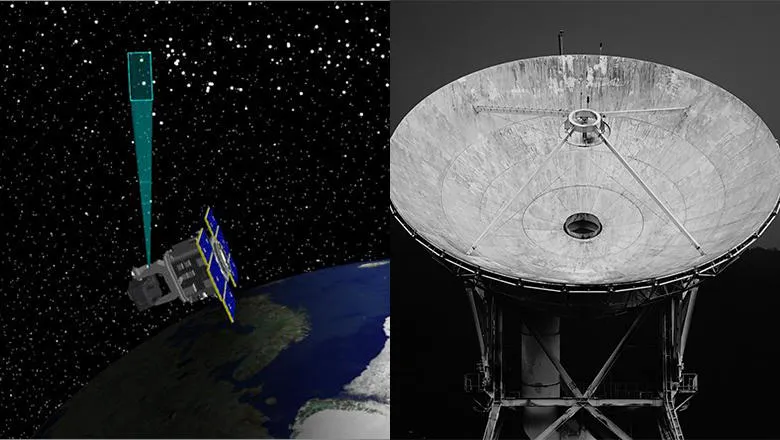16 June 2021
The risks and benefits of emerging technologies in the space power domain: Space Situational Awareness Warfare and Mediating Space Security
The Freeman Air and Space Institute publish two papers on space which look at the way space and satellites globally connect the world in very distinct – and distinctive – ways.

On the Today programme on BBC Radio 4, on Tuesday 15th June, Professor Catherine Heymans, Astronomer Royal for Scotland, was interviewed about the increasing number of satellites cluttering the night sky and her fears about space debris and space sustainability. New mega-constellations such as Elon Musk’s SpaceX are forcing other agencies to take avoiding action to protect their own satellites, as explained in a recent Freeman Air and Space Institute commentary.
Professor Heymans began by sharing the hope she’d had earlier in her career, that the era of satellite communications would, through fast and open access to the internet, ‘globally connect the world’.
Today, we are publishing two Freeman Papers on space which look at the way space and satellites globally connect the world in very distinct – and distinctive – ways.
In the first paper Dr Stuart Eves, with many years of industry and defence experience in the space domain, looks at the implications of satellite capability for warfare. Essentially, where satellites make connectivity better, militaries are bound to exploit these capabilities, just as the commercial and civilian sectors do. However, now satellites have become critical to modern military operations, so space aggressors have been exploring ways to limit space situational awareness (SSA).
The author considers several potential developments in Space Situational Awareness Warfare: on the defensive side from the use of stealthy technology to changing operating procedures – including introducing unpredictability into operations – to deception. As he states: ‘In a warfare scenario, it is anticipated that a variety of more aggressive measures might also be employed in an attempt to gain information superiority’.
Julia Balm, a PhD candidate at the Freeman Air and Space Institute, has produced a paper which considers the impact of a relatively new but revolutionary form of global connectivity: social media. Looking through the lens of applications like Twitter, she presents a novel take on understanding space norms, at a time when such norms are still immature – as recognised by the G7 Leaders’ Summit this month. Julia is researching strategic theory on 21st century space power, as nations including the UK wrestle with the challenges presented by rapid developments in the space domain.
The paper argues that social media users – and there are many with an interest in space from scholars to institutions to ‘space wonks’ – meet in social media settings to discuss emerging issues, and that these interactions help to shape the space security environment and discourse: commentating in real time on unfolding events.
She uses the example of the Kosmos-2543 Russian anti-satellite incident in July 2020 and analyses the reactions of key commentators on Twitter. Calling it ‘a prime example’ of ‘the influence of expert opinions on threat assessments’, she concludes that the event demonstrated ‘how widespread and instantaneous reactions across Twitter helped establish a threat level through informed and appropriate assessments’.
Professor Heymans, in her Today interview, demonstrated in a few minutes how space offers immense potential to do good but also harm - notions echoed by our two latest papers. Whilst Julia Balm offers an argument that social media can be harnessed for the good in discussions about space and the narrative shaping of frontier activity – even helping states and actors to gauge threat levels – Dr Stuart Eves outlines the inevitable, and potentially ominous, weaponisation of space situational awareness.
Whether for good or for ill, emerging technologies will have a fundamental impact on the space security domain, as they will on all areas of security and defence infrastructure. Governments and institutions need to get up to speed with the ever-growing number of threats posed and seek opportunities for using novel technologies to counter them.

